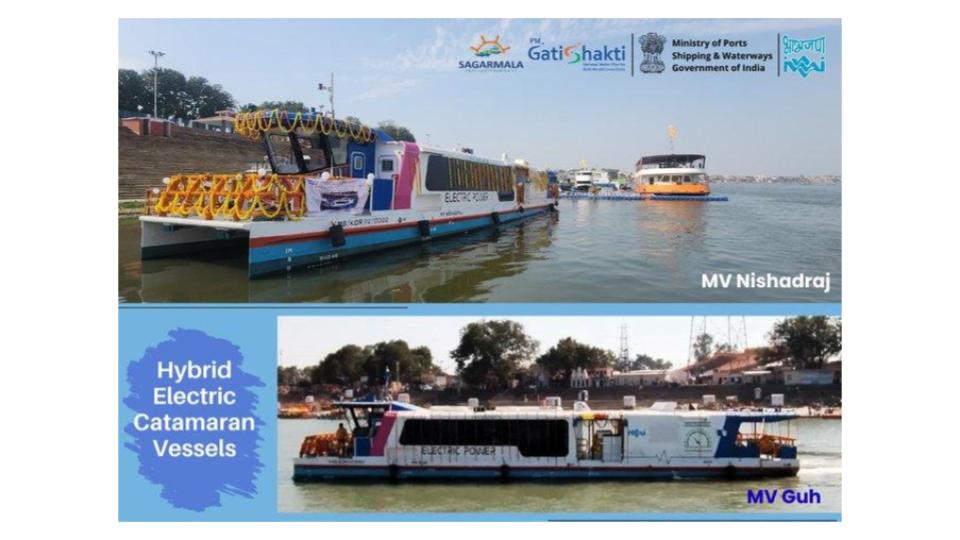In a landmark development for clean energy and responsible tourism, Prime Minister Narendra Modi dedicated two hybrid electric catamaran vessels – MV Guh and MV Nishadraj – during an event in Varanasi, Uttar Pradesh. The vessels, built by Cochin Shipyard Limited through Inland Waterways Authority of India (IWAI), signify a significant stride toward eco-friendly and efficient water transport.
MV Guh is designated to sail on the River Saryu in Ayodhya, while MV Nishadraj will operate on the River Ganga in Varanasi. Boasting a seating capacity of 50 passengers each, these state-of-the-art vessels are equipped with fast-charging batteries, targeting a reduction of 400 MT in carbon emissions annually. The Uttar Pradesh government will now oversee the operation of these vessels, to enhance religious tourism in the region.
The launch aligns with the rising trend of urban water transport in India, offering a sustainable solution to alleviate congestion and pollution in cities. These vessels, part of the Harit Nauka- Inland Vessels Green Transition Guidelines published on January 8, 2024, emphasize the shift toward greener and cleaner fuels. The guidelines aim for 100% green vessels in Indian waters by 2047, instilling confidence in stakeholders within the maritime sector.
PM Modi also inaugurated four community jetties in Varanasi and laid the foundation stone for 13 community jetties along National Waterway 1 in Varanasi and National Waterway 110 in Mathura and Prayagraj. Integral to the Jal Marg Vikas Project, these developments aim to enhance the navigability of the Ganga-Bhagirathi-Hooghly river system, fostering socio-economic growth along the waterways.
Adding to the advancements, the Quick Pontoon Opening Mechanism System (QPOMS) was inaugurated to expedite the dismantling and reassembly of kulfi pontoon bridges across NW-1, reducing overall logistics costs and cutting down delays in vessel and vehicular traffic from six hours to 30 minutes.
These initiatives represent a noteworthy leap towards a cleaner and more sustainable future for India’s waterways. The Ministry of Ports, Shipping, and Waterways aims to propel the share of Inland Water Transport to 5% by 2030, contributing to the broader Maritime India Vision and bolstering the nation’s maritime sector growth and connectivity efforts.
As part of the Maritime Amrit Kaal Vision 2047, a set of 46 initiatives has been outlined. The main focus is on improving the share of coastal shipping and inland water transport. These initiatives involve establishing centers near ports and coastal berths close to production/demand centers along the coast. The plan also includes projects for better road, rail, and inland waterway connectivity, along with efforts to reduce port dues and terminal charges.
To incentivize these efforts, there are proposals for fiscal benefits, such as allowing input tax credit on bunker fuel and spares purchased from various states. Additionally, there’s a plan to reduce GST for multimodal transportation. The vision also aims to operationalize 50 waterways by 2047 and introduce low-draft vessel designs, possibly using tug-barge configurations, to achieve these objectives.










